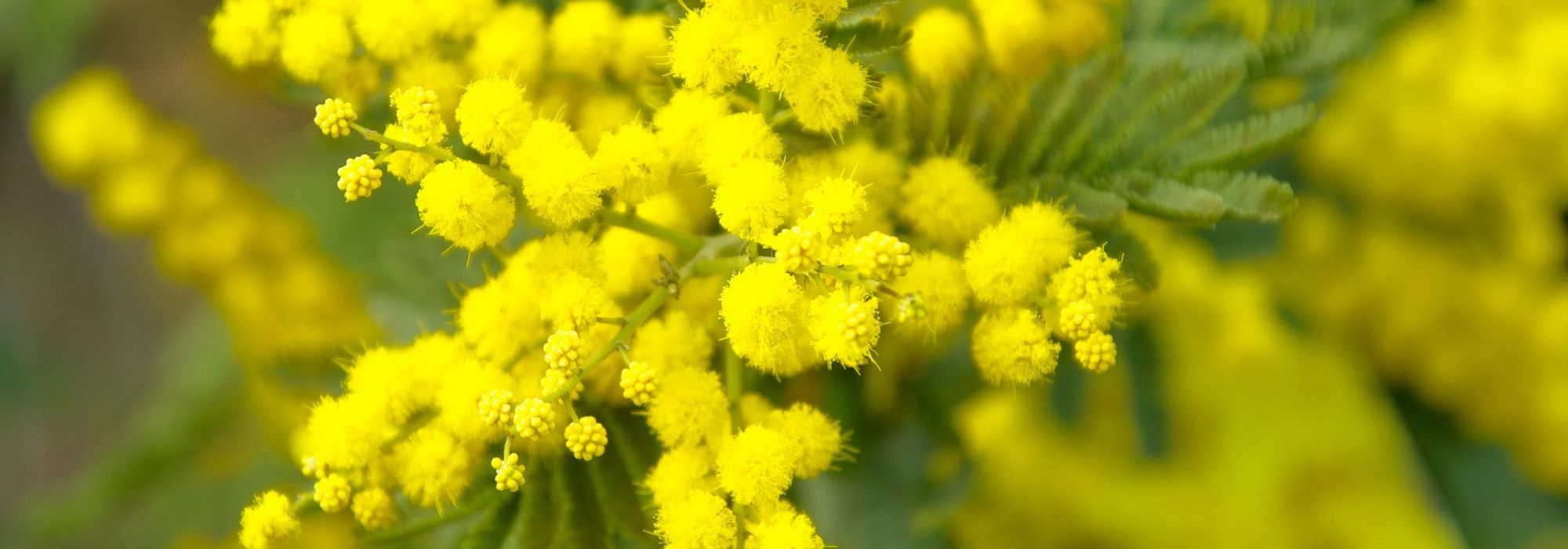
Acacia, wattle: planting, pruning and care
Contents
Wattle, in a nutshell
- Wattles are sun-loving trees symbolic of the French Riviera, notable for flowering out of season in clusters of yellow flowers, often very fragrant.
- In the garden, their height ranges from 3 to 10 m with erect, bushy, weeping or umbrella habit.
- These plants with fine, evergreen foliage have rapid growth and can sometimes be invasive.
- These trees are very easy to to grow in mild climates or in sheltered locations with varying levels of hardiness. They can also be grown in pots.
A word from our expert
Acacia belong to the genus Acacia and include a number of small Australian trees or bushes with abundant yellow pompom flowers. The African continent also has Acacias typical of the savannah, very thorny, with less spectacular flowering but which provide an important food source for wildlife.
Wattles are generally classified into two groups: those with leaves finely divided into leaflets, often more cold-resistant such as Acacia dealbata and baileyana, and those whose foliage is reduced to phyllodia (flattened petiole) resembling a narrow or triangular entire leaf, very leathery as in the Four-season mimosa (Acacia retinodes) or Acacia pravissima.
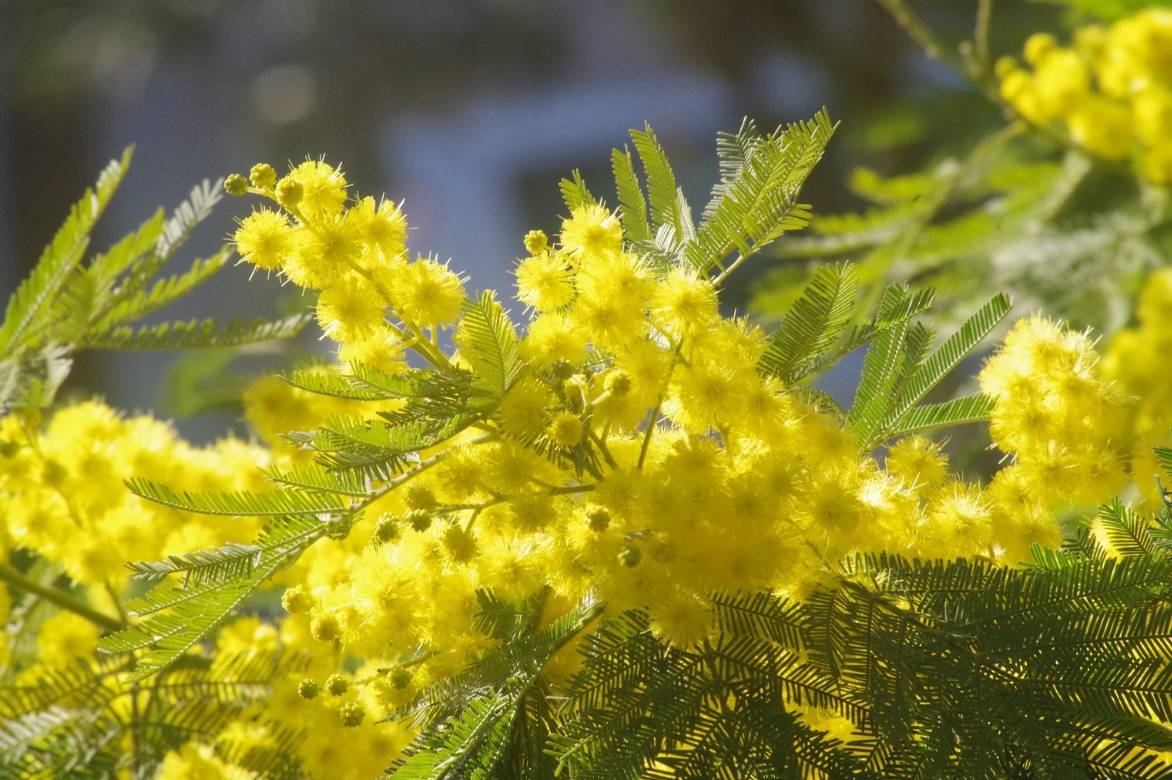
These Acacia were introduced for their undeniable beauty into many regions of mild climate, notably around 1850 on the Côte d’Azur, where some have naturalised. They are plants of a Mediterranean climate, semi-hardy, able to withstand frosts of around -8° to -10°C at best. Outside the Midi and the Atlantic coast, it is strongly recommended to grow them in a large pot and overwinter them indoors.
Having for the most part no affinity with calcareous soils, mimosas grown in our gardens are generally grafted onto Acacia retinodes. This rootstock has the advantage of not producing suckers and tolerates dry, calcareous soils well, but it perishes below -6°C and must be well protected in winter.
In-ground mimosa is naturally superb when planted alone. It can also be used as a hedge, in rows, as a living screen, due to its screening ability. Less vigorous cultivars can be planted within a bed of bushes or in a pot.
Description and botany
Botanical data
- Latin name Acacia
- Family Fabaceae
- Common name wattle, mimosa
- Flowering between December and March
- Height between 0.5 and 8 m
- Exposure sun
- Soil type any well-drained soil, dry, sometimes calcareous
- Hardiness Low to medium (-6 to -10 °C)
Genus Acacia encompasses species present on the African and American continents but above all in Australia and on some Pacific islands.
Australian mimosas have the unusual habit of flowering out of season. Brought by the English to the Riviera around 1850, mimosa has, so to speak, naturalised around the Mediterranean basin and also along the Atlantic coast as far as southern England!
Genus Acacia belongs to family Fabaceae or legumes and to subfamily Mimosaceae. It includes more than 1,200 species, most of which do not withstand our temperate climates. Species naturalised in France originate from Australian mountains and are confined to the Mediterranean region, the Atlantic littoral and a few sheltered spots as far as the Paris region. Some species such as Acacia baileyana, dealbata and decurrens are even considered invasive there because of a strong tendency to form suckers and to displace native plants. As with all legumes, roots fix nitrogen from the air and they grow very well in poor soil.
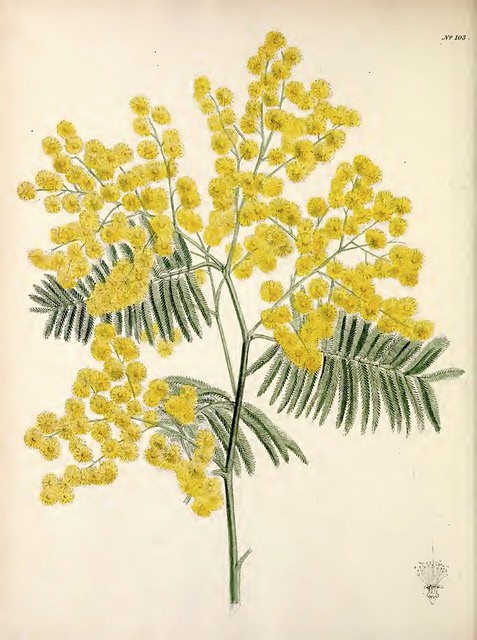
Acacia dealbata – botanical illustration
Here, height of erect trees ranges between 3 and 8 m (up to 30 m in their native range). Some have a sprawling habit ideal for covering a bank (Acacia baileyana Prostrate, declinata or dealbata Pendula…). For container cultivation there are forms with a compact habit such as A. retinodes Lisette, A. covenyi… A. dealbata Pendula grafted on a stem has a weeping habit of about 2.50 m in all directions and suits small gardens well. Mimosas often grow very rapidly. Acacia dealbata, the commonest, for example can grow by 1 m per year during its first five years and flowers after two years. In five years a plant can reach 6 m in height with a crown of similar breadth. However, its lifespan rarely exceeds 10 to 15 years. Other species can reach a century, such as Acacia melanoxylon, a mimosa with creamy flowering.
Their running root system helps retain soil on banks but can have a strong tendency to produce suckers. That is why these species are grafted onto the ‘four seasons’ mimosa rootstock, which is also tolerant of clay and calcareous soils. Grafting also encourages earlier flowering.
Leaves can be bipinnate with the look of fine ferns or replaced by phyllodia arising from a flattened, elongated or triangular petiole as in Acacia pravissima, which has a very particular imbricate silvery foliage. The foliage, generally evergreen, takes various hues — dark green, grey-green, bluish to purple as in Acacia baileyana Purpurea — interesting to consider since flowering generally lasts only between 3 and 6 weeks per year.
Flowering extends from December to March depending on species but also on mildness of the climate and exposure. Small round flowers are glomerules of bright yellow stamens gathered in axillary clusters. Their scent is unmistakeable: a fresh, herbaceous opening gives way to a divine honeyed aroma, a powdery fragrance.
Fruits are small brown pods that split down the middle and release round, flattened, rather tough seeds.

Various mimosa foliage: Acacia dealbata, Acacia retinodes (photo Forest and Kim Starr-Flickr), Acacia pravissima (photo John Tann)
Be careful: the term “Acacia” commonly designates a perfectly hardy North American tree, the black locust (robinia faux-acacia — Robinia pseudo-acacia), which is in the same family Fabaceae but has fragrant white pea-flowers in clusters. Conversely, the name Mimosa in Latin designates the sensitive plant (sensitive — Mimosa pudica), this suckering undershrub whose compound leaves close as soon as they are touched. It also forms small glomerules of stamens but pink and can be grown as an annual.
Read also
To grow mimosa in a potMain varieties of Acacia
For container planting, prefer small-growing trees such as Acacia dealbata ‘Le Gaulois’, Acacia decurrens with very fragrant yellow flowers, Acacia howittii ‘Clair de lune’ with short, slightly sticky phyllodia, prized for the elegance of its weeping silhouette and its lemon-yellow flowering, or Acacia mearnsii ‘Aestivalis’ for the originality of its very pale clusters opening in April–May and its honey-and-jasmine blended fragrances. The latter tolerates down to -12°C. Acacia dealbata ‘Rêve d’Or’ is also a low-vigour species with bluish foliage that contrasts nicely with its golden-yellow flowering. A. retinodes ‘PALME D’OR’ is a recent selection ideal for balconies, not exceeding 1 m in a pot and appearing to tolerate below -10°C.
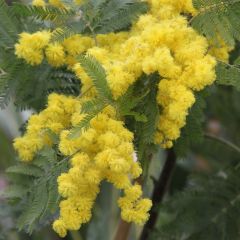
Acacia dealbata Gaulois Astier
- Flowering time February to April
- Height at maturity 5 m
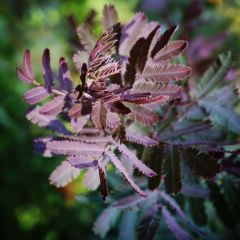
Acacia baileyana Purpurea
- Flowering time February to April
- Height at maturity 4 m
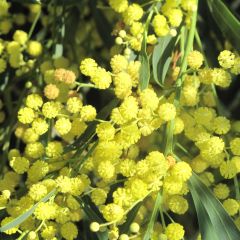
Acacia retinodes Lisette
- Flowering time June to December
- Height at maturity 4 m
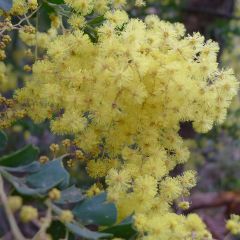
Acacia pravissima
- Flowering time April, May
- Height at maturity 5 m
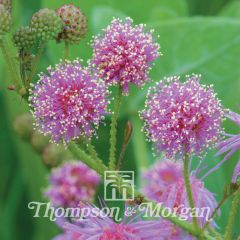
Mimosa nuttallii Pink Sparkles
- Flowering time July to October
- Height at maturity 60 cm
Discover other Acacia - Wattle
View all →Available in 1 sizes
Available in 1 sizes
Available in 1 sizes
Available in 2 sizes
Available in 1 sizes
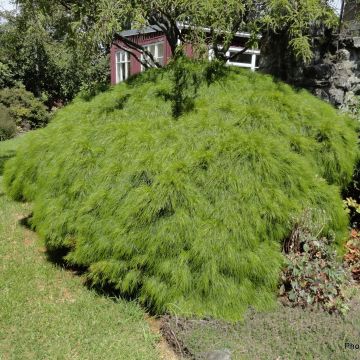
Available in 2 sizes
Available in 1 sizes
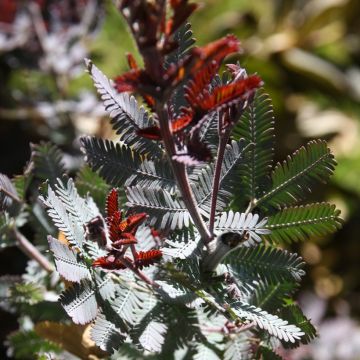
Available in 1 sizes
Available in 1 sizes
Planting wattle
Where to plant wattles?
Sun-loving plant par excellence, choose a spot receiving at least 3 hours’ sun per day, ideally close to the house to enjoy the fragrance and to shelter it from prevailing winds.
Acacias offer very high drought resistance, particularly the group of mimosas with phyllodia such as the four-seasons Acacia. Mimosas prefer sandy or stony, poor soil, tending to be acidic or neutral. However, young plants grafted onto Acacia retinodes help them better tolerate lime, which causes foliage yellowing. Grafting also limits suckering.
Acacia dealbata, considered one of the hardiest (-10 to -12°C), readily resprouts from the stump and produces suckers even if its aerial parts have completely frozen. However, do not hesitate to replant the suckers in a more sheltered spot because young plants are even more sensitive to frost.
When to plant?
If you buy a mimosa in flower, it is preferable to wait until spring to put it in the ground. Keep the young plant in its pot, making sure it is watered, in the coolest part of the house.
How to plant?
This plant is easy to grow provided you prepare a well-drained planting hole to increase your mimosa’s tolerance to cold.
- Plunge the bucket into a tub of water to thoroughly moisten it.
- Dig a hole three times as wide as the root ball.
- Place a draining layer of gravel at the bottom if your soil is heavy, then mix in horticultural compost (no fertiliser) or even heather soil if your soil is calcareous.
- Insert a stake then position the tree without burying the graft union.
- Backfill with soil and firm gently.
- Water.
For planting in a pot:
A 40 cm-sided container is suitable for a mature tree. Use heather soil with an acidic pH according to the requirement of the variety, or ordinary soil or compost that is not too rich.

Read also
How to dry mimosa?Care
Water regularly during first 2 years. Keep soil moist, especially during flowering. Apply a flowering plant fertiliser from March to September to potted plants.
Mimosas can be pruned after flowering to maintain a denser, rounded habit. This also reduces wind exposure and increases floriferous shoots. Don’t hesitate to gather stems for bouquets when young plant has enough vigour!
For potted plants, overwinter your mimosa in a bright, cool, frost-free room or protect the branches with a double layer of horticultural fleece if location is sheltered, and mulch the stump up to the graft.
Repot every 2 years into a container slightly larger but proportional to tree size.
Mimosas are not very prone to diseases and pests. Chlorosis of foliage is caused by excess lime in soil.
Find out more in our care sheet : Diseases and pests of mimosa.
Also read our advice : How to protect a mimosa in winter?
Propagation
Simplest propagation is to separate suckers on suckering species, but sowing in spring is also possible. Grafting requires some technical skill; it is carried out on non-suckering species, such as mimosa of the four seasons, which tolerates calcareous soil but confers low hardiness.
Sowing acacia
- Soak seeds in hot water or scarify the epidermis with sandpaper.
- Sow them in sowing compost and keep the sowing warm.
Uses and companion plants for wattle in the garden
In mild climate, medium-sized wattles such as Acacia dealbata make fine open-ground specimens to train on a trunk. Light foliage does not cast excessive shade in winter and it is advisable to plant it sheltered by a wall or an evergreen hedge to protect buds from frost. However take care with non-grafted species that tend to sucker, as is the case with florist’s mimosa. Its running roots easily spread to other parts of garden, especially after tree has been cut back by frost.
Regularly pruned mimosas during or after flowering retain a low rounded habit as seen with producers of cut flowers and can be used to stabilise soil on a bank.

An example of a planting combination: Leptospermum scoparium ‘Martini’, Acacia retinodes ‘Lisette’, Escallonia ‘Apple Blossom’ (©Hortival Diffusion), Callistemon
Acacia easily makes a screening and windbreak hedge when planted with Retama, Buddleia or Olearia for example, but control of suckers is required with suckering species. Small grafted cultivars are preferable to create beds of bushes with exotic appearance alongside Abutilon Suntense, Caesalpinia gilliesii, Jacaranda mimosifolia (blue jacaranda), Sesbania punicea, Callistemon, Leptospermum, Escallonia or Coleonema album.
To accompany early spring flowering of mimosas, plant alongside Prunus triloba, Japanese quince or Teucrium fruticans ‘Azureum’.
Did you know?
For enthusiasts, note that the national mimosa collection is located in Bormes‑les‑Mimosas at Gérard Cavatore Nurseries.
Mimosa was introduced to the French Riviera for scent and for bouquets around 1850 by the English. Plant has naturalized there to such an extent that some species have become invasive, such as Acacia baileyana, A. dealbata and A. decurrens. Navigator James Cook brought back the first seeds of Acacia verticillata from Australia.
Further reading
-
- Discover our range of Wattles
- Care sheet: Mimosa in a pot
- Care sheet: How to protect a Mimosa in winter?
- Tutorials: How to dry Mimosa?, How to prune a Mimosa?
- Discover: Plants used by perfumers
- Browse our articles to choose which Mimosa to plant according to your region? and to find out Why isn’t my Mimosa flowering? 6 common causes and their solutions
- Our blog article: Invasive plant… should we be worried about Mimosa?
- 5 exotic bushes with winter flowering
Frequently asked questions
-
Is it advisable to plant a mimosa near a house or a swimming pool?
Acacia dealbata has both an extensive and vigorous superficial root system that can lift surface paving, damage underground networks and crack foundations. Furthermore, it tends to produce suckers when affected by frost or cut back severely. Therefore it is important to choose a mimosa grafted onto Acacia retinoides (mimosa des 4 saisons) to avoid these problems.
Planting a mimosa near a hard-bottomed pool can be done with species that produce few suckers, especially since faded flowers cause soiling at a time of year when the pool is usually covered.
- Subscribe!
- Contents
































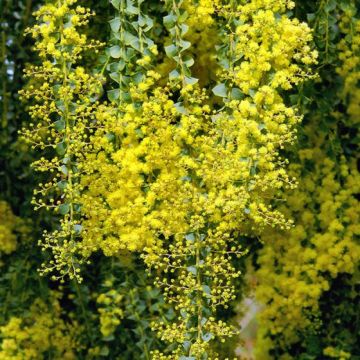
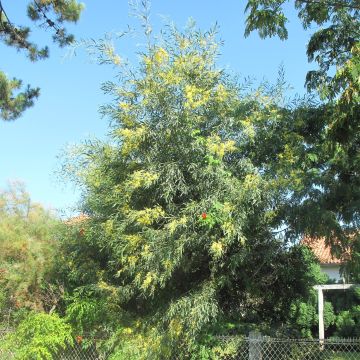
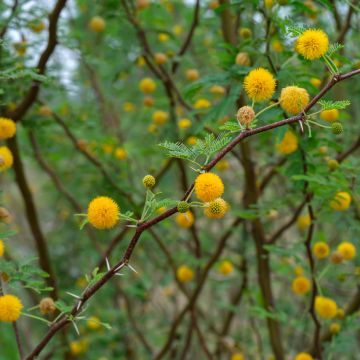

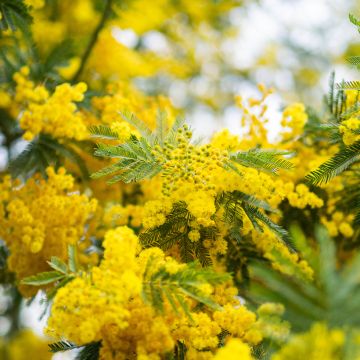
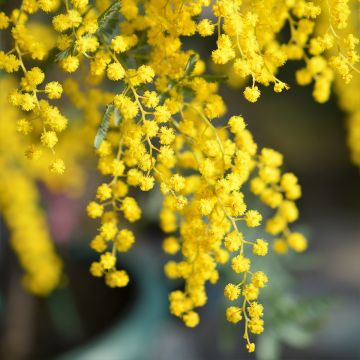
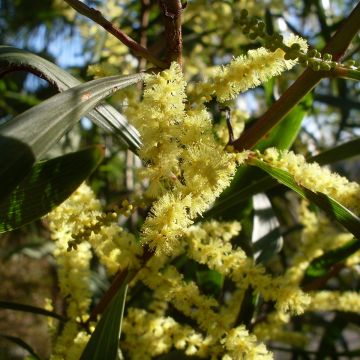
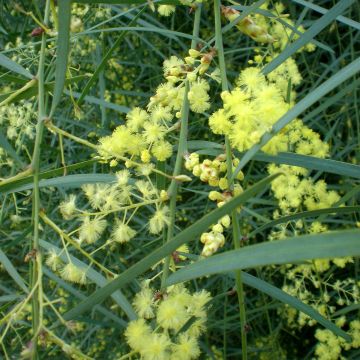
Comments